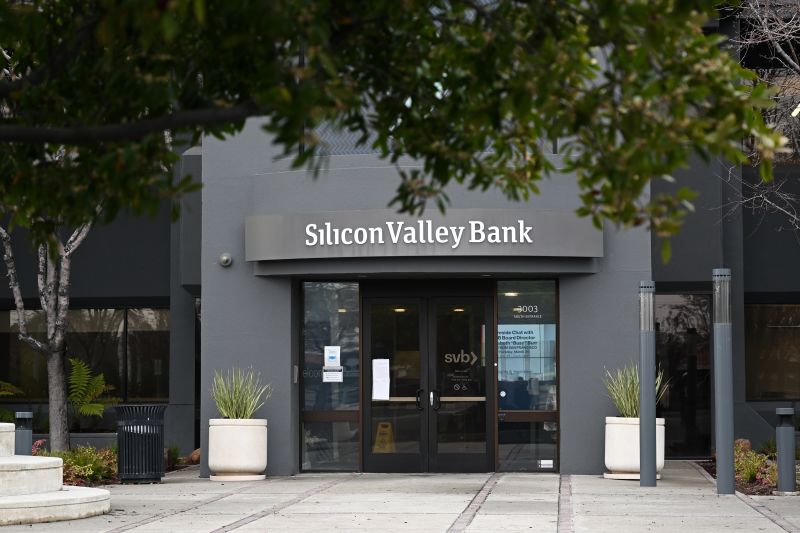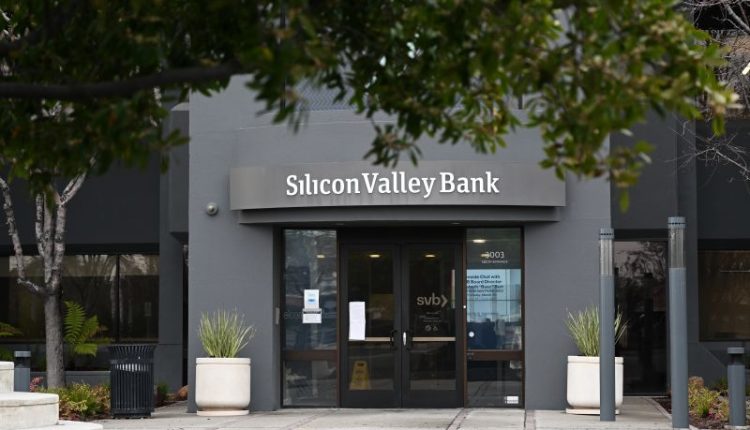
New York CNN —
Silicon Valley Bank failed in rapid, stunning fashion Friday. This week, the tech and banking sector are growing skittish about the next shoe to drop.
What took place Friday was an old-fashioned bank run: Customers yanked $42 billion from Silicon Valley Bank on Thursday, leaving the bank with $1 billion in negative cash balance, the company said in a regulatory filing. In other words, the bank owed more to customers than it had on hand. SVB and federal regulators scrambled but couldn’t raise enough capital to make up the difference, and the bank was declared insolvent Friday.
The Federal Deposit Insurance Corp. took control of the bank and said it would pay customers their insured deposits on Monday. But there’s a catch: The FDIC covers just $250,000 in customer deposits. As of the end of last year, Silicon Valley Bank said it had $151.5 billion in uninsured deposits, $137.6 billion of which was held by American customers.
Although customers could collect some of their uninsured deposits as the government unwinds and liquidates the bank’s assets to repay them, it’s not clear that the companies invested with the bank will recover all or close to all the cash they had stored at SVB.
That has led to two major fears and one unified call for action: Investors are concerned other banks with similar profiles to SVB could be next to fail. Wall Street is also concerned the tech companies that kept their cash with Silicon Valley Bank could collapse. That’s why demand for a government bailout is growing.
It may be coming – but it probably won’t look anything like the last one.
Comparisons to 2008
Enhanced US regulations following the 2008 financial crisis led the biggest, most systemically significant banks to shore up their emergency reserves to withstand storms like the current situation. That means the global banking system is not in danger of collapsing like it was a decade and a half ago.
“The banking system overall is more resilient, it has a better foundation than before the [2008] financial crisis,” White House Office of Management and Budget Director Shalanda Young told CNN’s Kaitlan Collins on “State of the Union.” “That’s largely due to the reforms put in place.”
Some of SVB’s problems were unique to the bank: It provided financing for almost half of US venture-backed technology and health care companies, so it had nearly all its eggs in one basket. Most banks are better diversified than that.
But not all: Wall Street investors sent smaller bank stocks sinking sharply over the last few days. First Republic Bank (FRC), PacWest Bancorp (PACW) and Signature Bank (SBNY) fell so much Friday they tripped an automatic circuit breaker and were temporarily halted so nervous investors could take a breather. First Republic’s stock is down 29% over the past two days. Signature is down 32%.
That led the broader stock market down more than 3% Thursday and Friday on widespread speculation customers may start to pull their money out of smaller banks too, perhaps echoing the savings and loan crisis that lasted through much of the 1980s and early 1990s.
As the Fed hiked rates at a historic pace and the value of banks’ bonds started to crumble, the gap between what banks paid for bonds and what they became worth widened dramatically: Banks were sitting on $620 billion unrealized losses at the end of last year, according to the FDIC, and some small banks may get sucked into the ravine without help.
And companies that had massive uninsured deposits with SVB may be unable to make payroll or do business next week. Many tech startups said they were scrambling to figure out their next steps and whether they could survive their bank’s sudden collapse. A popular crypto stablecoin Circle fell to an all-time low this weekend. Bankruptcies, insolvencies, layoffs and plenty of other disruption could follow in the week ahead if SVB customers aren’t made whole.
What a bailout might look like
Calls for a bailout have grown over the weekend from Silicon Valley to Wall Street. Those calls may go unanswered.
Treasury Secretary Janet Yellen has been in touch with financial regulators all weekend and working with them “diligently” following the collapse of Silicon Valley Bank, Young told CNN. But Yellen pushed back on a bank bailout in an interview with CBS Sunday.
“Let me be clear that during the financial crisis, there were investors and owners of systemic large banks that were bailed out … and the reforms that have been put in place means that we’re not going to do that again,” Yellen told CBS. “But we are concerned about depositors and are focused on trying to meet their needs.”
However, Yellen suggested the government may try to do something to shore up companies that had large, uninsured deposits with SVB.
“We’re well aware that many startup firms have deposits and venture capital firms have deposits at this bank that have been affected by its failure,” Yellen said. “So this is something we’re working to try to resolve.”
CNN’s Sam Fossum and Matt Egan contributed to this report.
Source: edition.cnn.com

